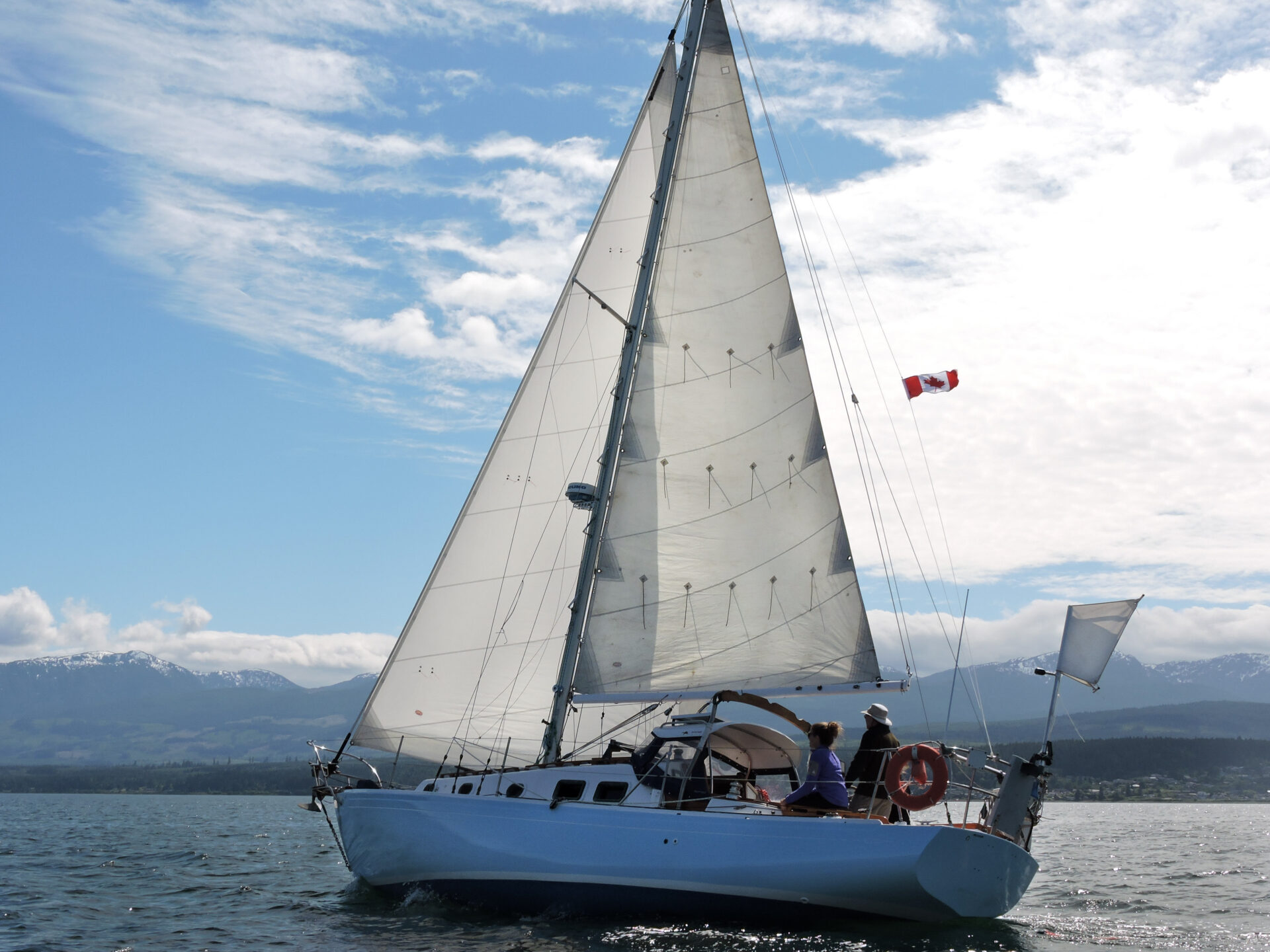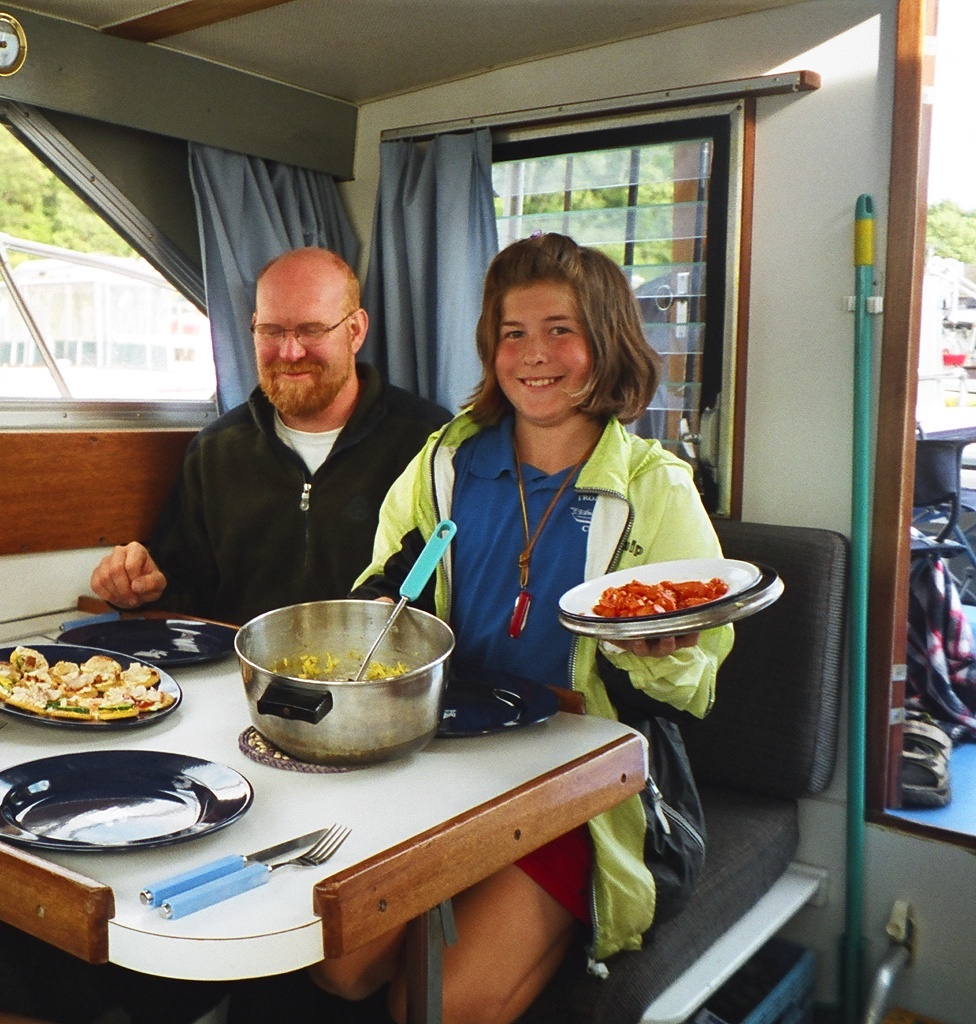While most kids were thrown into camps in the summer months, my dad thought it was more important for me to spend time on the water. Throughout my childhood, he encouraged me to catch and kill crabs, tie bowline knots one-handed, read a compass, and even scrape peeling varnish. Each summer we spent a month exploring Desolation Sound, the Broughton Archipelago, or the Gulf Islands; the same waters in which his parents cruised when he was a kid.
My dad encouraged me to get messy and try new things. He saw my need for speed and let me take the tender out in the harbour for joy rides. Soon, my favourite activity was throttling up and launching off the wake of other boats cruising by. By the time I reached my teens, after circumnavigating Vancouver Island, I was beginning to understand the importance of self-sufficiency while cruising. I quickly understood why my dad’s hands were always calloused and blackened, why scuba diving is not just for pleasure but a skill that can come in handy in stressful situations, and that the sound of the crackling weather forecast on the VHF isn’t just an annoying alarm in the mornings.
I was 15 when my family sailed to Mexico. By this time I wanted to contribute more as a crew member. My dad titled me captain of the dinghy on surf landings and even gave me the responsibility of a two-hour night watch. I began to ask more questions. It was on this trip that my dad taught me how to read the wind, set the mainsheet, and even fix the bent wind indicator at the top of the mast. He saw my desire to scuba dive, which of course lead to teaching me how to change the zincs. The world was at my increasingly calloused fingertips.
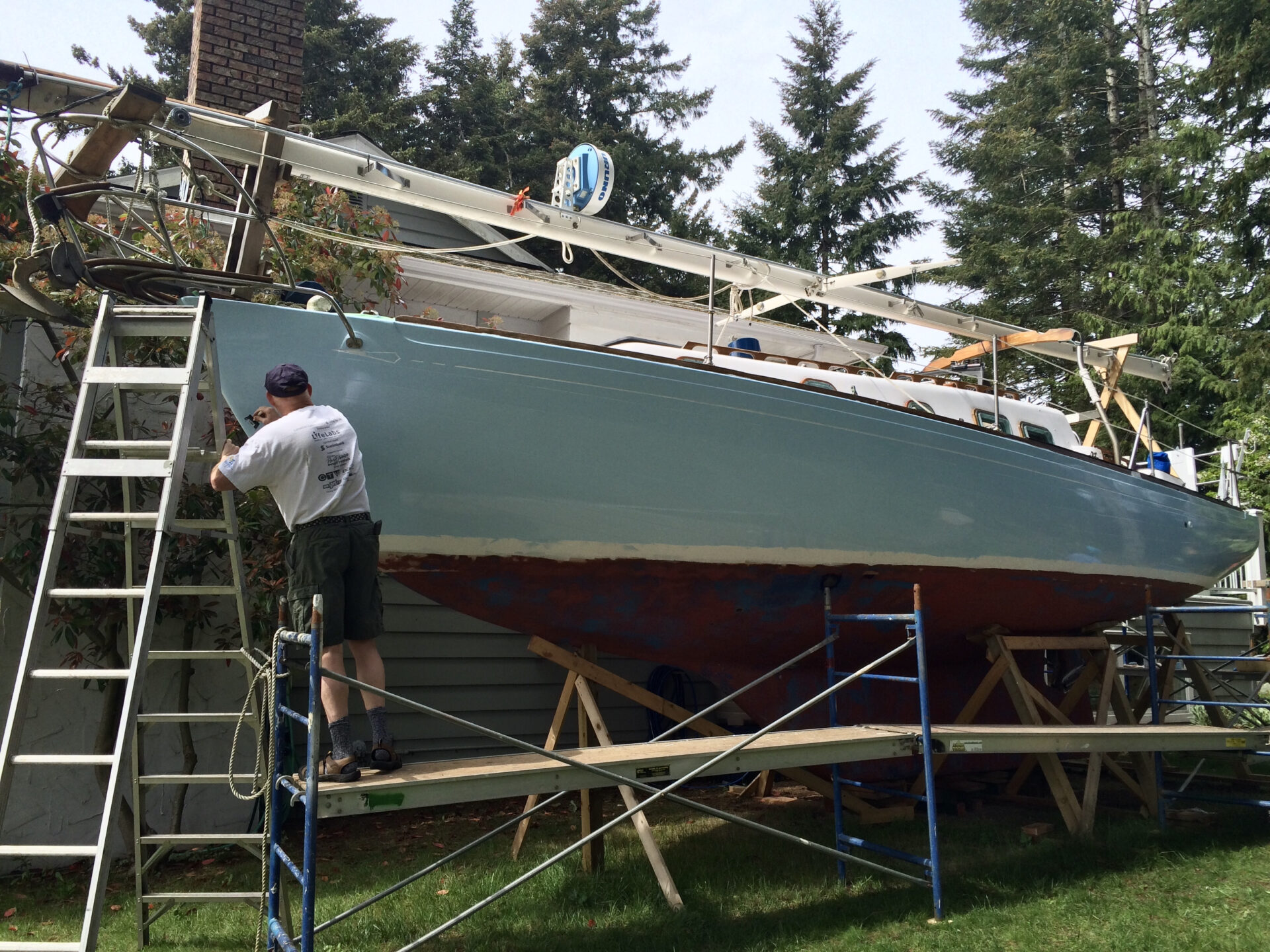
Being a west coast child of the ’60s and ’70s, my dad grew up pouring through Robin L. Graham’s story of Dove. He passed on Dove and Tania Aebi’s Maiden Voyage to me, which I too eagerly consumed. Decades apart, we were both inspired by the same words; both shaped by the stories of adventure and the time on the local coastal waters below that now laps at our hulls.
A few years later, I found myself missing the freedom of being on the water. It seemed that my dad and I were both having the same thoughts running through our heads. After he acquired a 34-foot Islander, my dad called me out of the blue, “Do you want to sail to Hawaii with me?”
Over the next couple of months, the romanticism of crossing the Pacific turned into reality; this was my chance to learn as much as I could from him. Perhaps, I too could embark on my own journey one day. My dad did his best to try to teach me the basics while we refitted the boat, but still, there were holes in my understanding. He tasked me on jobs and I happily did what I was told. I worked alongside my dad to paint the hull, install the liferaft, and I was even able to help when I was the only one who could fit in the small space of the lazarette to help untangle some wiring. Meanwhile, he worked on installing a new engine and ensured we had spare parts for everything.
This time we didn’t have the safety of the coast beside us; we left our home waters of B.C. with butterflies in our stomachs, pointing out to open ocean. My dad taught me a lot that trip. He showed me how to make micro-adjustments to the self-steering device, how to read the clouds so I could reduce canvas before the next squall hit, and the importance of routine checks on the deck looking for chafing and rigging wear. Some of it we learned together, like the time we discovered that we had installed the U-vent for the head too low, resulting in a literal poop deck. With only a boat and an endless horizon for 25 days, I was forced to learn from my own errors as well, which included when I turned the battery switch to ‘off’ instead of ‘1’ while the engine was running. I didn’t even know what an alternator was until that tense moment. Amidst the never-ending movement of the swells that rolled beneath us, I managed to teach myself a few things too. I learned how to reef the main while solo on night watch, how to trim the sails to get the most out of the wind, and even managed to successfully make tuna tacos from freshly caught fish.
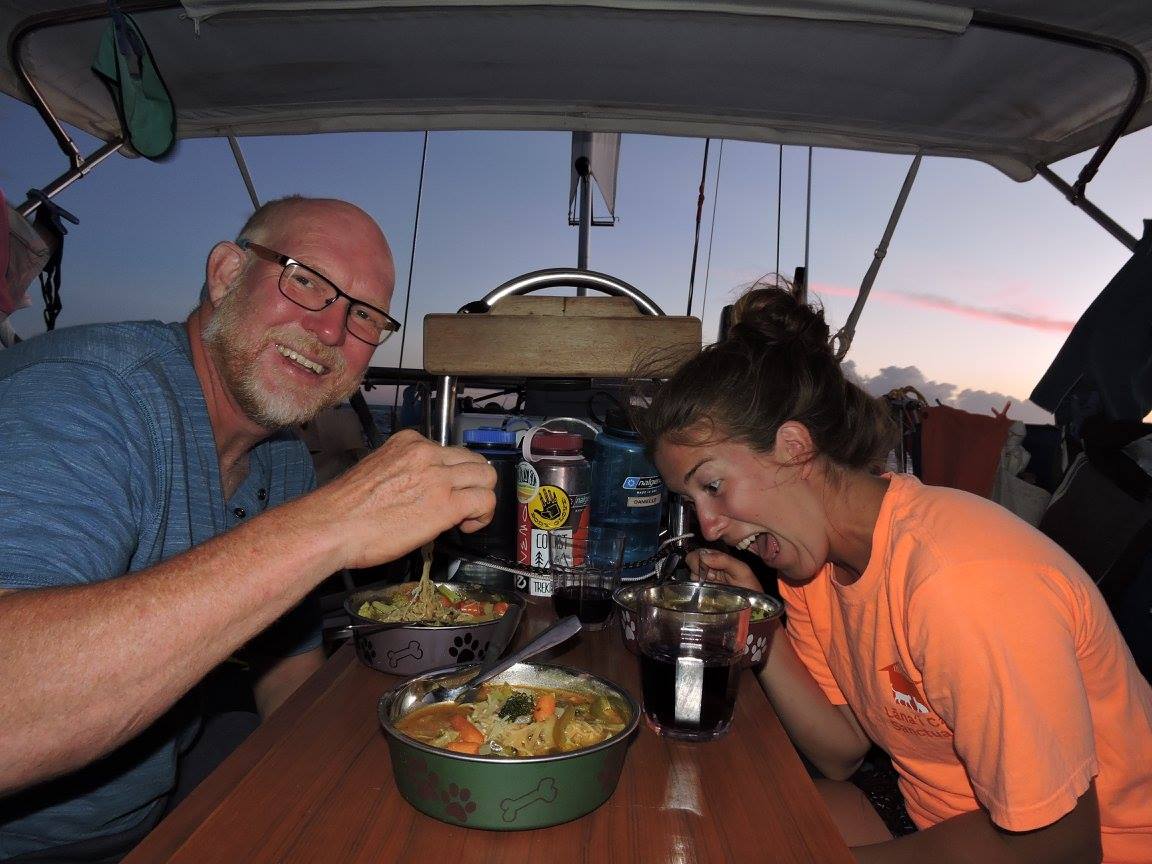
We returned home early September with a few more smile lines, many stories to tell, and still, a yearning to head south. My dad offered to sell me the Islander shortly after our return. He told me that if I was going to be a boat owner, I would have to take responsibility for all the components. I still didn’t feel ready; could I really be responsible for maintaining my own boat? He sold it to another eager buyer and life went on.
Six months later, I still couldn’t shake the dream. With many calls back and forth to my dad, I decided to purchase my own sailboat. He sent me boat ads to look at and came with me to carefully inspect each one. He helped me write a list of things I should look for and with that criteria, it didn’t take too long for me to find a boat that called my name.
We eagerly tackled projects together, but the time crunch so I could move aboard resulted in him having to finish some of the projects without me. I returned from a work trip to find a new AC and DC electrical system, along with a hefty marine store bill. The realities of boat ownership were setting in, yet my excitement wasn’t easily discouraged. My dad and I spent the next few months with our heads in the engine room. He patiently taught me how to change hose clamps, fuel filters, and walked me through how the salt water cooling system works. I asked questions with the goal of fixing and maintaining it without him. I’d never felt so proud.
My first sailboat taught me a lot. Like when the salt-water pump belt slipped. Between my newly learned knowledge of the salt-water cooling system and my dad’s helpful voice over the phone, I was able to continue on with my voyage. My learning progress was slow, but I was becoming more comfortable with small fixes and the overall upkeep of my little home.
It didn’t take me long to realize my little boat wasn’t the one to take me south; I needed a boat I could to rely on. My dad sent me home with a small library of books to read and I studied each book carefully, trying to absorb as much information as possible. This time I went to look at the boat myself, with the inspection list I had previously made. I carefully scrutinized a Jason 35 with my checklist in hand and decided she was the one for me. After the purchase, my dad came with me on my first time day-sail with her. He talked me through reversing out of the tight spot with a full keel boat. I hauled her out shortly after for fresh bottom paint. He reliably showed up at the boatyard with a trunk load of tools and ardently showed me how to grind down fibreglass and paint the bottom.
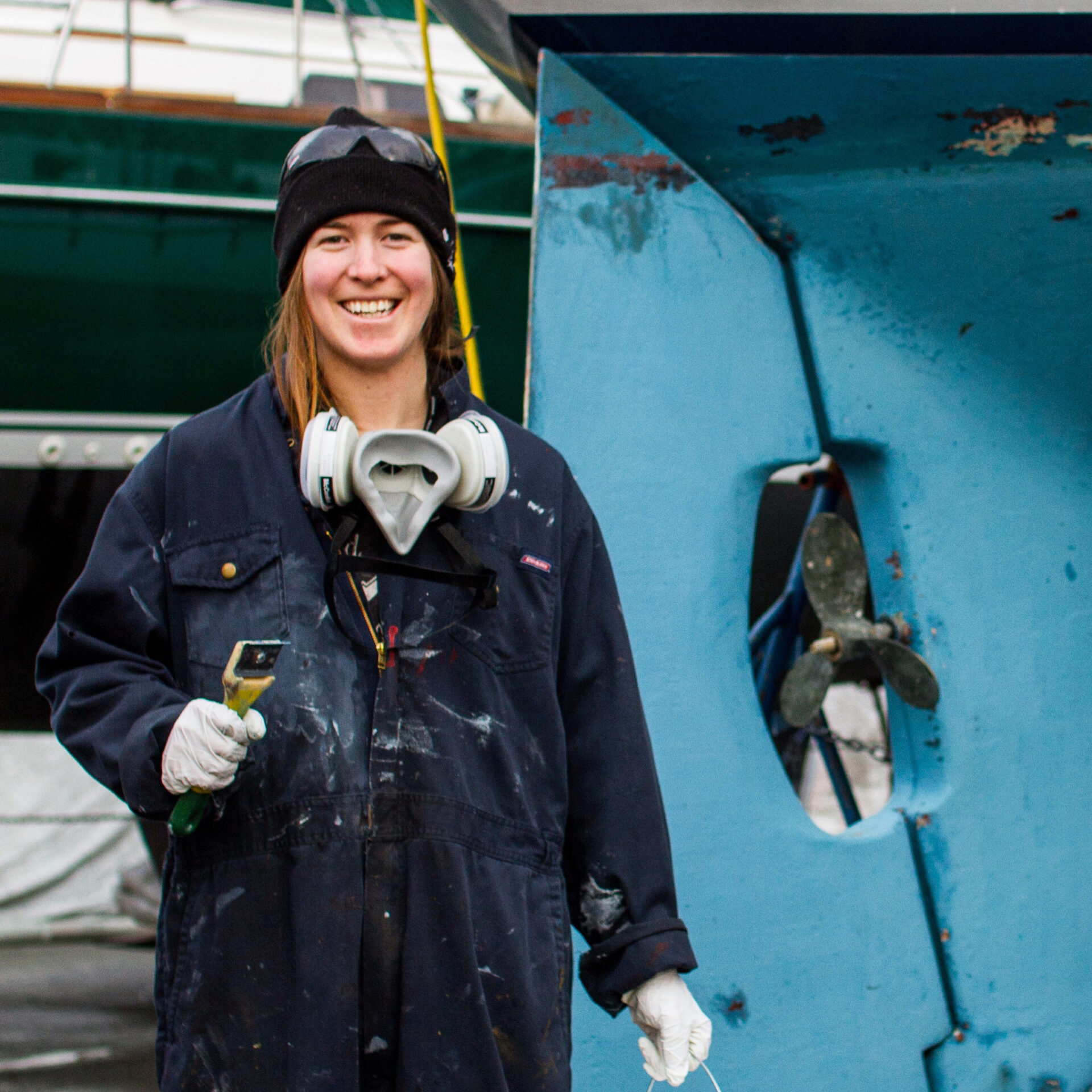
After a summer of sailing, I pulled the boat out of the water for the winter. My dad kindly offered his yard as her new home. He gave me access to his shop, patiently taught me how to use the power tools, and together we started on my list of projects. As we started pulling cupboards apart and rebuilding the galley, I realized that my confidence was growing. I was tackling each project with a plan, rather than simply relying on my dad to tell me what steps were needed. Soon I found myself covered in epoxy, paint and fibreglass dust, tackling projects by myself on weekends my parents were using their boat. I’d never felt so accomplished.
As I work toward sailing south I know that my dad won’t always be able to be there for me when I’m stuck. Of all the lessons he has taught me, the most important is that the best way to learn is by making mistakes. I don’t hesitate for a second knowing that I will be making plenty of those over the years.
8 Tips I learned from my Dad
1. Take the time to pre-plan
Some of my best projects and ideas have come from a Tim Horton’s napkin while having our morning coffee. Draw out the idea, plan with a few days ahead and stop and think before you jump into each project.
2. Have at least three projects on the go
This means you are more efficient ordering parts and when you get stuck on one project (like waiting for paint to dry or the right part to arrive), you can move onto the next one with- out wasting time having to run to the store.
3. Measuring is a skill
I took for granted how important accurate measuring is when purchasing parts for my boat, until being an eighth of an inch off and having to spend $100 more on hoses that I had just bought an hour earlier. I’ve now learned that accuracy is key (and calipers are a useful tool).
4. Leverage is your friend
Being a female means that I naturally don’t have as much muscle power as some, but there are always ways to get creative. Using long-handled screwdrivers and socket wrenches to increase leverage on rusty old bolts and hose clamps has made me feel like Popeye the sailor!
5. Creativity is key when on a budget
I may not have all the fancy tools that fill the walls and cupboards of my dad’s shop, but by using a bit more patience, creative thinking and spare bits from other projects, I have come up with some great solutions to projects like my flooring and storage systems.
6. Function over form
The key to being a self-sufficient sailor is to be practical and prepared. For example, having an organized tool cupboard that takes valuable storage space is much more important than, well, pretty much everything else on board.
7. There is no such thing as being finished
This lesson was taught to me when I was 10 when we spent the summer cruising on my parents mastless Formosa 51 that was halfway through a refit. At some point, the tools should be stowed away and the lines should be tossed ashore. After all, isn’t another name for cruising fixing boats in different places?
8. You don’t have to fit the stereotype
Sailing and owning a boat can be an intimidating endeavour. Some sailors, like my dad, have degrees in engineering or perhaps have spent years working on fish boats. Some are retired or maybe just have a disposable income. We all share the same desire to be on the water and just because someone doesn’t fit the stereotype of an old salt, doesn’t mean they are not capable (or capable of learning!).
